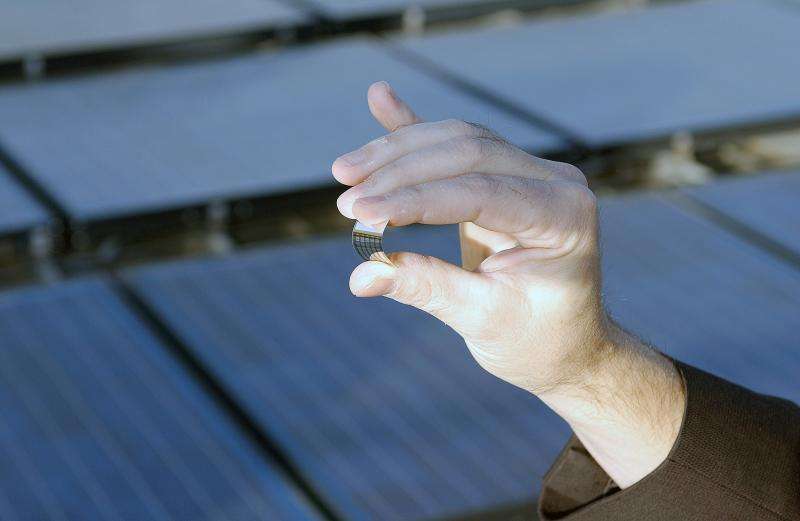NIST demonstrates quick testing of organic materials with off-the-shelf technology

Hunting for the best material from which to build organic solar cells can be like seeking the proverbial haystack needle, but now scientists at the National Institute of Standards and Technology (NIST) and the Naval Research Laboratory may have a better search tool for the nascent industry.
The team's research findings in Nature Communications show it is possible to test a candidate material quickly and directly, using off-the-shelf laser technology. The method bypasses the costly, time-consuming step of constructing a prototype solar cell for each material to be evaluated.
"We'd like to give companies and manufacturers an alternative to trial and error," says NIST research chemist Ted Heilweil. "It takes a long time to develop photovoltaic materials for market. Screening them using our method would be much faster."
Organic materials (e.g. plastics) hold a particular attraction for the solar industry, largely because of their comparative low cost and physical flexibility. Organics inspire the possibility of one day painting an inexpensive solar array onto most any surface, even one that bends and moves, and simply replacing it with a fresh coat when it wears out.
At this point, organics are far less efficient at converting sunlight to electricity than traditional silicon-based technology, but ideas for better materials come at a fast clip. Unfortunately, sifting through these candidates and zeroing in on the most promising ones is expensive and arduous. Because it entails building a prototype cell for each prospective material, relatively few candidates get tested.
The team's new method sidesteps this problem by using ultrafast lasers to probe a candidate material's abilities directly—and without electrical contacts. They found that when shining pulses of visible light onto a sample to mimic the sun, they could probe the sample's electronic behavior with a second laser pulse near the microwave range of the spectrum. When the sample absorbs these "terahertz" waves, its properties change in easily detectable ways. Just how the terahertz pulse changes is dependent on the material's viability at converting light to electricity.
To test their method, the team looked at a number of mixed organic molecules and polymers whose abilities were well-understood from conventional prototyping.
"We looked at small organics and polymers that people in the solar industry have been using as benchmarks, and we saw the same relative behavior with our terahertz measurements," Heilweil says. "We're pretty confident that our method can tell you what is useful to know."
The team is using the method as part of its own ongoing materials search, Heilweil says.
More information: "Hot photocarrier dynamics in organic solar cells." Nature Communications, 6. Article 7558.Published online July 16, 2015. DOI: 10.1038/ncomms8558
Journal information: Nature Communications
Provided by National Institute of Standards and Technology



















